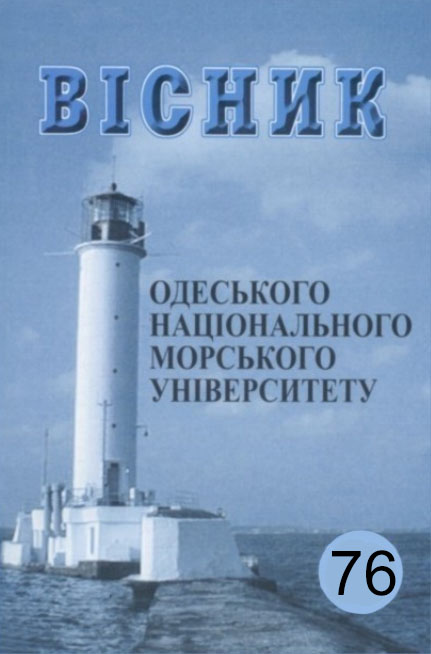Проблемні питання експлуатації та утилізації лопаток повітряних турбін
##plugins.themes.bootstrap3.article.main##
Анотація
Поступове збільшення кількості виробників електричної енергії передбачає подальший розвиток альтернативної енергетики. Відновлювана енергетика – це екологічно чисте невичерпне джерело енергії, що надає можливість зменшити навантаження на ресурсну базу та знизити загальну ресурсозатратність. Крім того, використання відновлюваних джерел енергії сприяє сталому розвитку міст, які завдяки сонячним, вітровим, біогазовим установкам можуть забезпечувати себе електроенергією, тим самим зменшуючи свої витрати та залежність від ресурсів. Населення може самостійно виробляти електроенергію та контролювати її розподіл, а також мінімізувати втрати при передачі на великі відстані. Вітроенергетика є одним із перспективних напрямків в області відновлюваних джерел енергії. В статті розглядаються проблемні питання використання енергії вітру та утилізації лопастей вітрогенераторів, що є основною метою роботи. Загальновідомо, що для виробництва електроенергії вітровими турбінами потрібні певні умови. Як показали дослідження, найбільш перспективними місцями для виробництва електричної енергії вважаються прибережні морські райони, де протягом року утворюються потужні повітряні течії. Дослідження проблеми утилізації показує, що це питання є дуже актуальним і переважує всі позитивні елементи вітроенергетики. Стандартний термін служби лопастей вітрових турбін становить близько 20-25 років. Серед сучасних методів утилізації розглядаються наступні варіанти вирішення цієї проблеми ‒ використання скловолокна в якості шумозахисних бар'єрів, наприклад, на магістралях, та пресування лопастей, наприклад, у ДВП для вико- ристання в якості піддонів у морській та будівельній промисловості, огорож та залізничних шпал тощо. Для досягнення поставленої мети авторами статті застосовано методи аналітичного огляду наукових праць вчених і фахівців, системного аналізу теоретичних матеріалів і практичних рекомендацій світової практики щодо експлуатації та утилізації елементів вітрогенераторів. Проведений науковий аналіз зосереджений переважно на пошуку оптимальних та найякісніших методів утилізації, що потребує майбутніх глобальних досліджень.
##plugins.themes.bootstrap3.article.details##
Посилання
Vitroenerhetyka Ukrainy. Retrieved from http://www.uwea.com.ua/ukraine_wind.php
BP. (n.d.). World energy outlook to 2030. Retrieved from http://www.bp.com
Dzenzerskyi, V.O. (2011). Vitroustanovy maloi potuzhnosti [Small-scale wind installations]. Kyiv: 592 p.
Prylypko, T.V., Potapova, T.E., Skrypnyk, O.Yu., & Melnyk, V.Yu. (2012). Ekolohichna bezpeka miskoi zabudovy. Suchasni tekhnolohii, materialy i konstruktsii v budivnytstvi, 88–94.
Zabarnyi, H.M. (2002). Enerhetychnyi potentsial netradytsiinykh dzherel enerhii Ukrainy. Kyiv: 151–159.
Jensen, J.P., & Skelton, P. (2018). Wind turbine blade recycling: Experiences, challenges and possibilities in a circular economy. Renewable and Sustainable Energy Reviews, 97, 165–176. https://doi.org/10.1016/j.rser.2018.08.007
Kosharska, L., Bredniova, V., & Nikiforov, Yu. (2022). Rozvytok zelenoi enerhetyky na suchasnomu etapi yak polityka svitovoho enerhetychnoho peredilu. Visnyk Odeskoho Natsionalnoho Morskoho Universytetu, 1(67), 168–188.
Kosharska, L., Brednyova, V., & Nikiforov, Yu. (2022). Research of the regularities of “green” energy and the world trends of its development. Development of Transport Journal, 4(45), 7–14.
Koval, V., Kaminskyi, O., Brednyova, V., & Kosharska, L. (2022). Digital ecosystem model of labour resources management in economic militarism. Revista Gestión de las Personas y Tecnología, 14(45), 123–143.
Koval, V., Sribna, Ye., Brednyova, V., Kosharska, L., Halushchak, M., & Kopacz, M. (2024). An analysis of the economic and technological potential of solar driven generation. Energy Policy Journal, 27(1), 157–172.
Nissenbaum, M.A., Aramini, J.J., & Hanning, C.D. (2012). Effects of industrial wind turbine noise on sleep and health. Noise & Health, 14(60), 237–246.
Aubrey, C., Pullen, A., Zervos, A., & Teske, S. (Eds.). (2007). Wind energy outlook 2007. GWEC, Greenpeace International, DLR, Ecofys Consultancy. Berlin: 31 p.
Ruiqing, M., Prasenjit, N.G., Madhu, Kh., Weiwei, W., & Jian, R. (2019). Effect of wind turbines on bird abundance: A national scale analysis based on fixed effects models. Energy Policy, 132, 357–366. https://doi.org/10.1016/j.enpol.2019.06.030
Simos, J., Cantoreggi, N., Christie, D., & Forbat, J. (2019). Wind turbines and health: A review with suggested recommendations. Environnement, Risques & Santé, 18(2), 1–11.
Smurzyńska, A., et al. (2018). Methane fermentation as a possibility of utilization and energy–efficient management of sewage sludge. pp. 128–134. Retrieved from http://www.windeurope.org
CNBC Ukraine. Retrieved from http://www.cnbc.com.ua/
